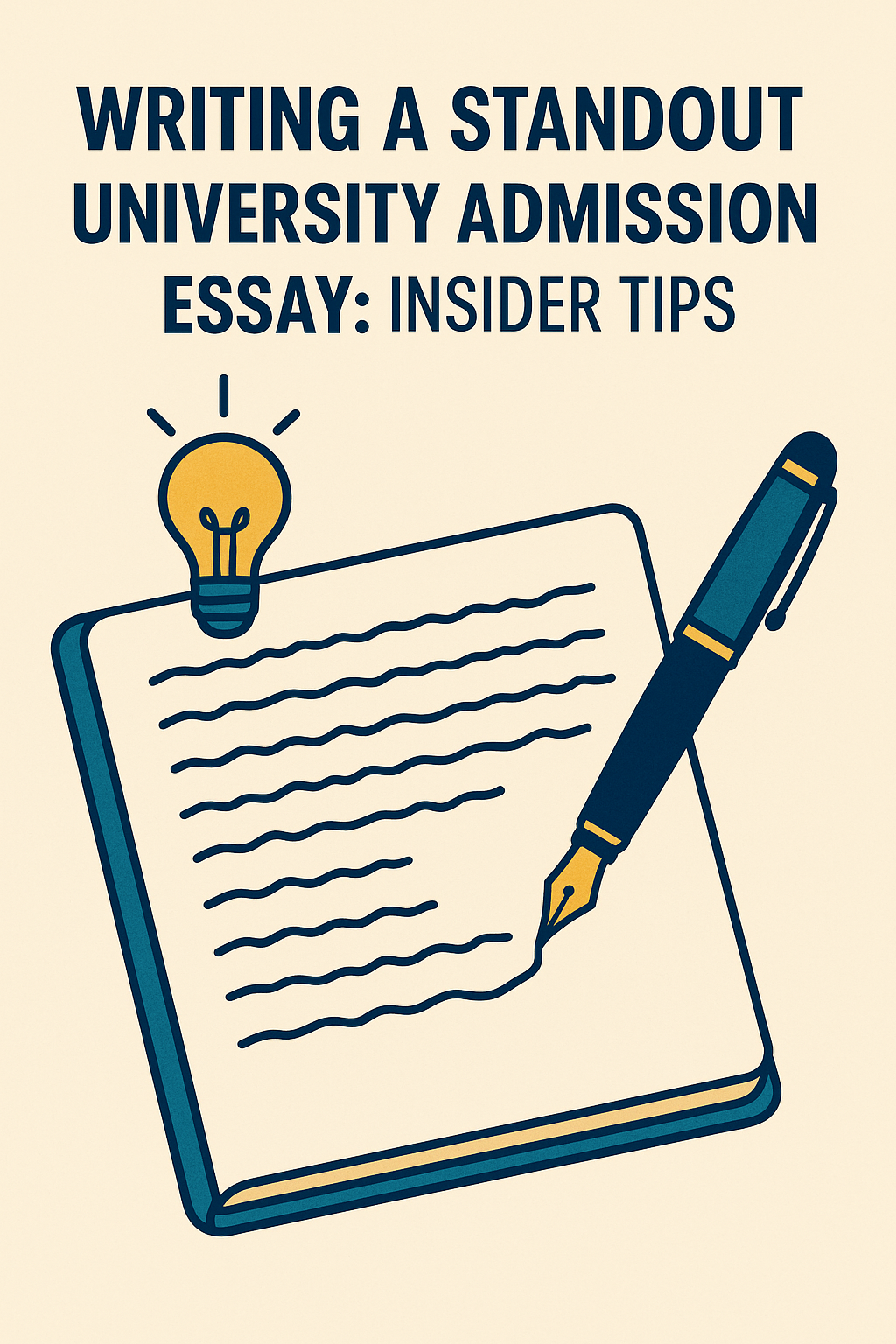1. Introduction
Your university admission essay performs pivotal work in your application it breathes personality into your credentials, spotlights your unique journey, and demonstrates fit for the program. With thousands of applications vying for limited spots each year, standing out hinges on an engaging narrative, strategic structure, and polished style.
In this comprehensive guide, we expand our original strategies to cover every facet of essay writing, ensuring a deeper dive into brainstorming, research integration, stylistic nuance, cultural fit, and final polish. You’ll learn to craft essays that resonate emotionally and intellectually, weaving your experiences into a cohesive story that admissions officers remember.
By stretching beyond common advice incorporating research on institutional values, dynamic voice techniques, and advanced revision tactics you’ll produce an essay not only free of clichés but brimming with authenticity and purpose.
2. Decoding the Prompt with Precision
2.1 Categorizing Prompt Types
- Personal & Reflective Prompts: e.g., “Describe a defining moment in your life.” Requires introspection and thematic focus.
- Intellectual Plots: e.g., “Discuss a book that influenced you.” Blend summary, analysis, and personal impact.
- Program‑Specific Prompts: e.g., “Why this program?” Demand institutional research and alignment of goals.
- Diversity & Ethics Prompts: e.g., “How will you contribute to campus diversity?” Combine personal identity with action plans.
2.2 Mapping Key Requirements
- Action Verbs: Identify whether to “describe,” “analyze,” “evaluate,” or “reflect.” Tailor your approach: descriptive for storytelling, analytical for intellectual prompts.
- Word Limits: Strategies for concision, avoiding redundancy. Plan a buffer of 5–10% for flexibility.
- Formatting Cues: Whether bullet points are allowed, required headings, or reflective tone.
2.3 Research Integration
- For program‑specific essays, gather details on faculty research areas, curriculum highlights, unique campus initiatives. Embed these references organically to show genuine interest.
3. In‑Depth Brainstorming and Idea Selection
3.1 Advanced Reflection Techniques
- Kolb’s Experiential Learning Cycle: Concrete experience → reflective observation → abstract conceptualization → active experimentation. Apply to select events that demonstrate growth.
- SWOT Self‑Analysis: Identify personal Strengths, Weaknesses, Opportunities, and Threats. Use findings to choose experiences showcasing strengths and growth in areas of weakness.
3.2 Ideation Workshops
- Peer Roundtables: Brainstorm in small groups, exchange prompts for fresh angles.
- Role‑Reversal Exercise: Write a mock recommendation letter about yourself; extract three key themes.
3.3 Filtering for Uniqueness
- Score each potential story by originality, emotional resonance, and alignment with prompt requirements.
- Choose the top one or two stories with the highest combined score.
4. Structuring for Impact: Beyond the Hook
4.1 Crafting a Memorable Hook
- Scene‑Setting: Begin mid‑action with sensory details (sound, sight, smell).
- Provocative Statement: Use a paradox or startling fact linked to your theme.
4.2 Thematic Throughline
- Ensure each paragraph ties back to your central thesis: the main message or transformation.
- Use thematic sentences at paragraph openings to maintain narrative coherence.
4.3 Weaving in Research
- Integrate details about the university: mention a professor’s work, a campus resource, or outcome measurements (e.g., program ranking).
- Avoid forced name‑dropping; instead, show how your goals resonate with the institution’s mission.
4.4 Conclusion with Forward Momentum
- Transition from personal past to future aspirations: how the university serves as the bridge.
- End with a reflective question or vision statement that lingers.
5. Elevating Language, Tone & Voice
5.1 Voice Consistency
- Maintain a balance between formality and authentic personality; allow occasional colloquial phrase if context-appropriate.
- Avoid vacillating between first and third person.
5.2 Linguistic Devices for Engagement
- Anaphora: Repetition of a phrase for emphasis.
- Antithesis: Juxtaposing contrasting ideas (“Despite failure, I found victory.”).
- Parallelism: Balanced structure in lists or sequences.
5.3 Vivid Verbs and Specific Nouns
- Replace generic verbs with precise ones (“initiated” vs “did”).
- Choose concrete nouns that evoke imagery.
6. Integrating Feedback: Iterative Revision Process
6.1 Multi‑Stage Editing
- Macro Edit: Focus on structure, flow, thesis alignment.
- Meso Edit: Paragraph cohesion, transitions, tone consistency.
- Micro Edit: Sentence clarity, grammar, punctuation.
- Final Proofread: Typos, formatting, word count.
6.2 Constructive Feedback Loops
- Solicit input from mentors with essay‑specific expertise.
- Use rubric‑based reviews: content relevance, voice authenticity, grammar.
7. Avoiding Subtle Pitfalls
- Unwarranted Self‑Praise: Use evidence‑based claims; show, don’t tell.
- Overuse of Quotations: Limit external quotes; all analysis should be original.
- Tangential Anecdotes: Every detail must serve the thesis.
- Cultural Bias: Be mindful of audience diversity; avoid assumptions.
8. Final Touches: Polishing and Presentation
8.1 Formatting Excellence
- Consistent font and spacing; adhere to submission guidelines.
- Use headers if allowed; otherwise, ensure readability with clear paragraphs.
8.2 Title and Naming Conventions
- Craft a concise, evocative title if required (no more than 8 words).
8.3 Submission Checklist
- Confirm file type, naming format, word count.
- Backup copies; verify receipt if possible.
9. Case Study Examples
Include two anonymized sample excerpts (350 words each) demonstrating before‑and‑after edits: raw draft vs polished final. Highlight improvements in structure, language, and impact.
10. Conclusion
Writing a standout admission essay transcends mere self‑promotion it’s an artful narrative weaving personal growth, intellectual curiosity, and institutional alignment. By engaging in deep reflection, precise structure, dynamic voice, and iterative refinement, you’ll craft essays that leave admissions committees both informed and emotionally moved.
Embrace the process: allocate dedicated time for brainstorming, drafting, and revision. Seek feedback purposefully and maintain authenticity. With these expanded strategies and a commitment to excellence, your admission essay will be a powerful catalyst for achieving your academic aspirations.
